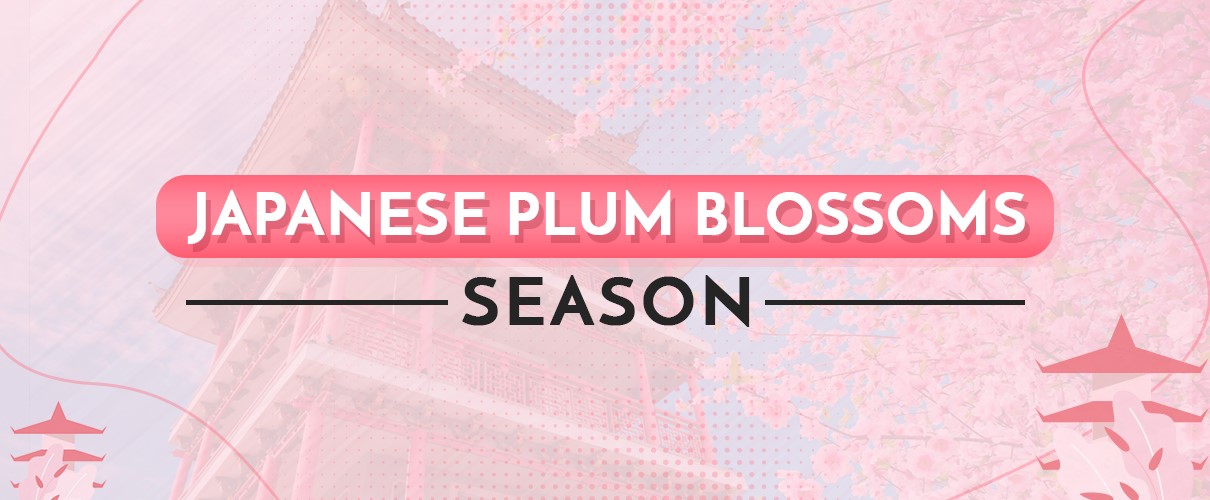
From early February to mid March, Japan celebrates "Ume Matsuri", or the "Plum Blossom Festivals" (Ume meaning plum, matsuri meaning festival) every year. The Ume Matsuri are an essential role in Japanese culture, with festivals being held throughout Japan, attracting thousands of tourists during this blooming season.
The Plum blossom symbolizes the ending of deadly cold winter and the start of early spring. It is the best time for Japanese people to organize the first picnic party of the year before Hanami arrives.
If you wish to study more about Japanese festivals, you can learn Japanese online to grow your knowledge about Japan and Japanese people.
Let's continue reading to explore the Ume Matsuri history in Japan and what the plum blossom represents!
In the 8th century, plum trees were introduced to Japan by its neighboring country China, which were regarded as precious by Japan's royalty. As such, Japan's emperor would hold plum blossom viewing parties each year after the Nara period (710-784), after which flower viewing became a major part of Japanese culture.
In the past, many plum trees were planted on older plots of land in Japan as people believed them to have the ability to ward off danger. This location where they were planted was called the 'Demon's Gate,' which was always in the northeast corner of the property from where evil and danger were believed to enter.
Although many modern Japanese people no longer believe in such practices, the effects of this cultural phenomenon can still be seen to this day, with Japanese people incorporating Ume trees into their home garden's design. Presently, plum trees are also planted at many Buddhist temples, shrines, and public parks.
The Japanese plum has many varieties such as pink, white, dark pink, and yellow. Plum trees have stiff, knobby branches with dark wood, and plum blossoms grow right on the stem with round petals. Japanese plum blossoms have a sweet flowery fragrance, with their leaves being a beautiful hue of purple, unlike most other trees with green leaves.
Plum trees are known for their fruit "Ume." The Japanese Ume is a fruit that is like something in between a plum and an apricot, also being a stone fruit that is super acerbic and inedible when raw. When pickled, however, the plum fruit changes into "Umeboshi," a classic ingredient used in traditional Japanese cuisine.
Many people around Japan widely use Plum-themed accessories. It also appears as decorative motifs like in Kimono, paintings, jewelry, wall posters, wood, ivory, and kitchen accessories. Plum blossoms also play a significant part in Japanese folk songs, novels, and poems. It is something that the Japanese are proud of.
As plum blossoms bloom earlier than other plants, they represent the thawing of winter and seasons changing. As such, they have come to be recognized as the messengers of spring.
Naturally appearing in February, plum blossoms come to life even while covered in frost. They are unphased by cold and associated with solid endurance, good health, and protection from evil spirits.
The Japanese plum also symbolizes prosperity for farmers, as the spring welcomes the farming season. Hence, bountiful crop harvests and good fortune are likewise associated with the plum blossom.
In Japan, flowers are not only seen as delicate, beautiful things but potent and noble symbols. Hopefully, you have a better idea of the Japanese Plum Blossoms Season after reading this blog, and maybe you will book a trip to see them in person. If that's the case, learning the Japanese language will make your stay in Japan significantly more fulfilling and enjoyable, allowing yourself to appreciate the Japanese culture and its charm in a deeper and more profound way.
So without wasting any time, enroll in one of the Japanese semester courses offered by Oku Sensei's Japanese to get a better picture of Japanese culture and tradition!